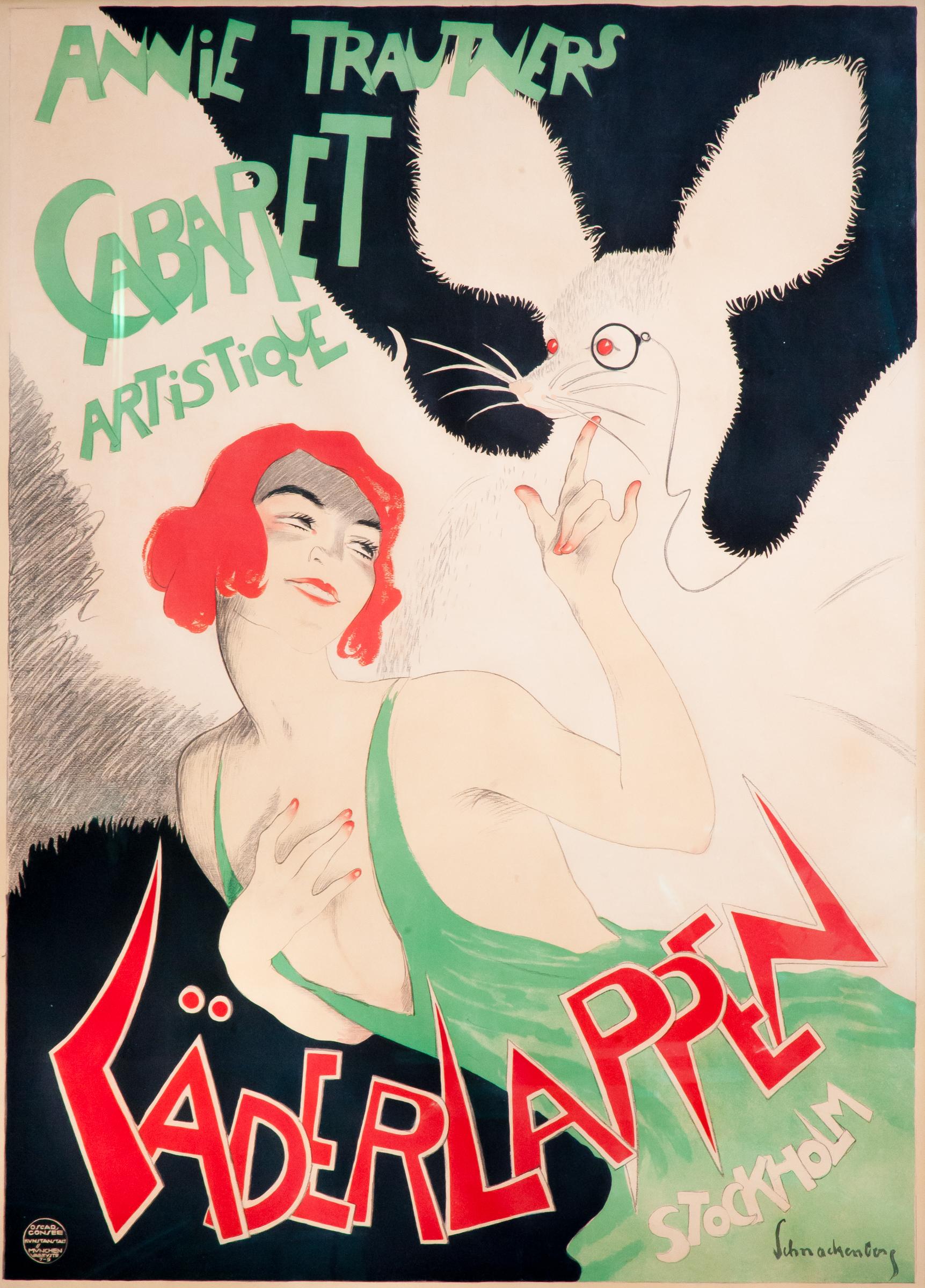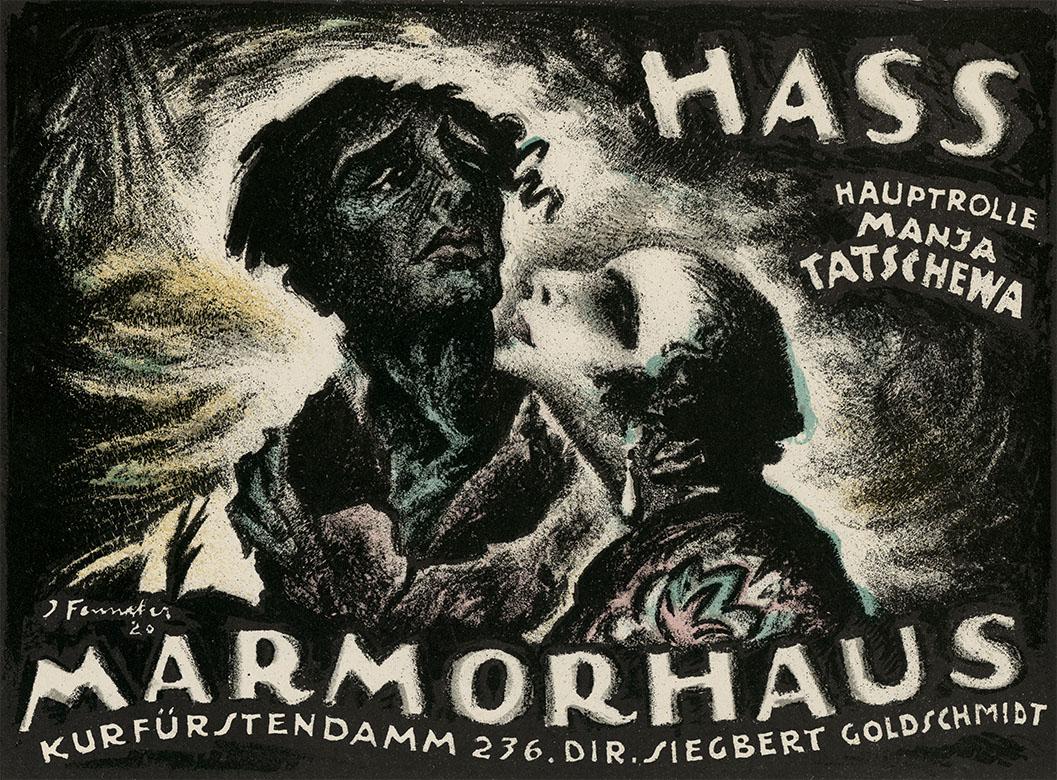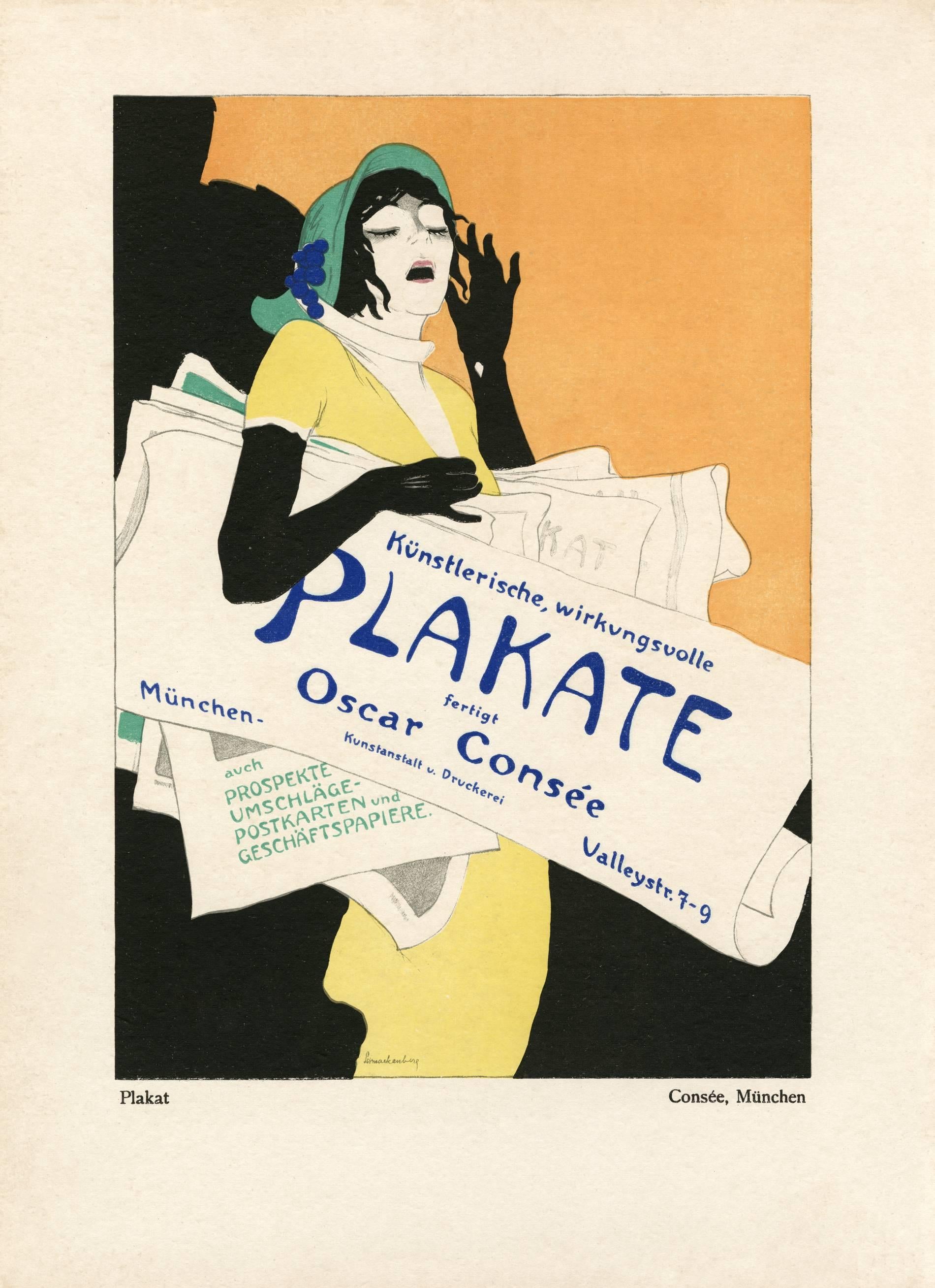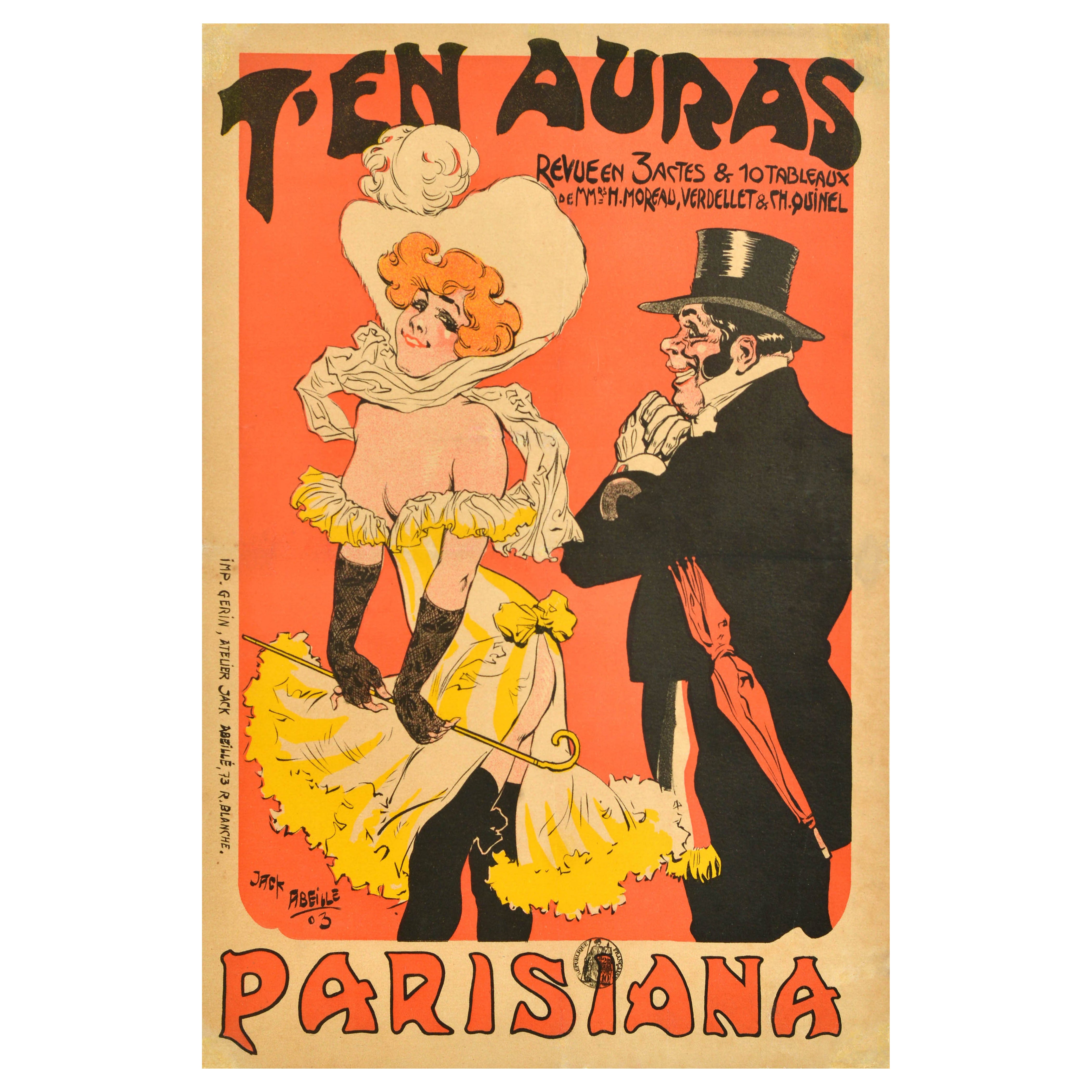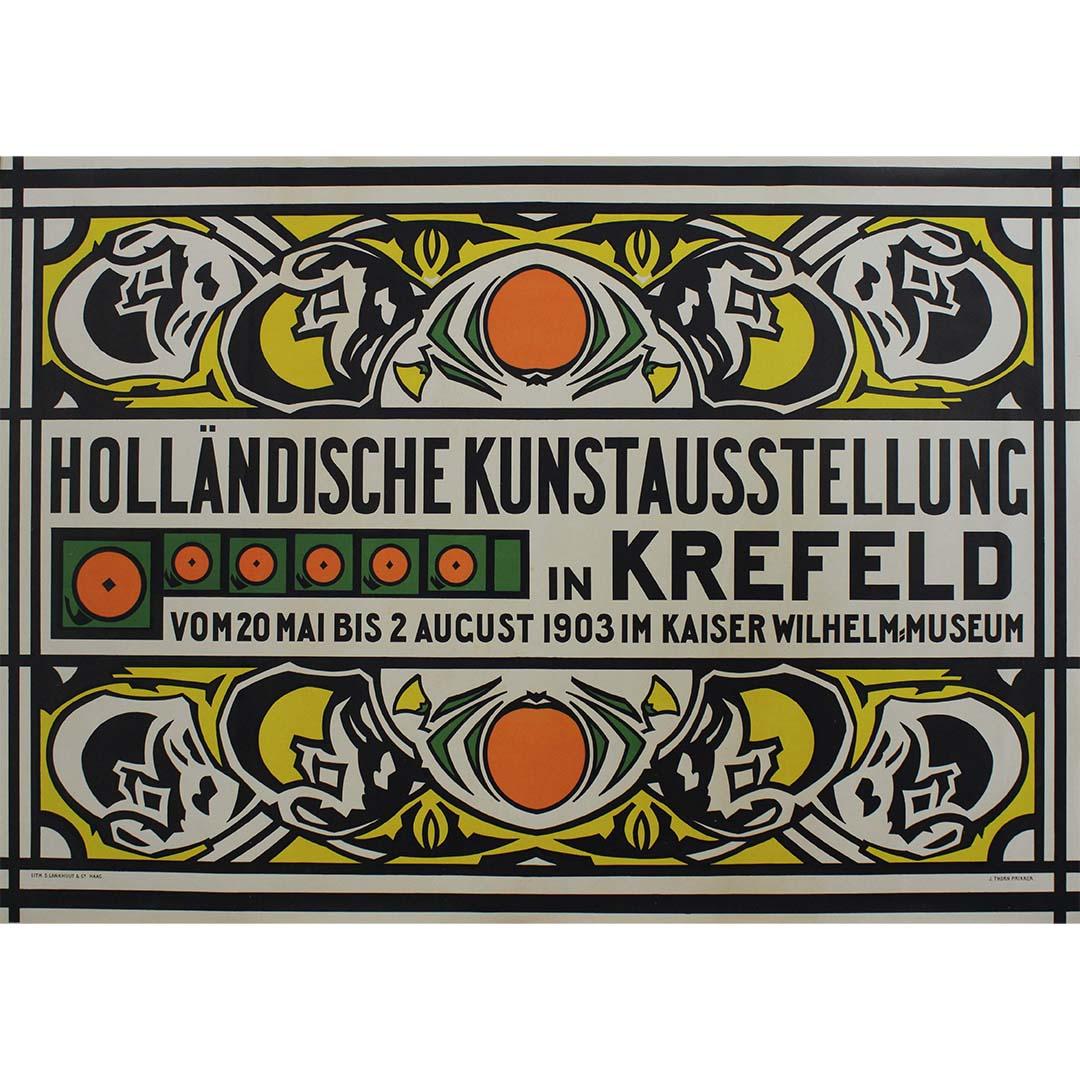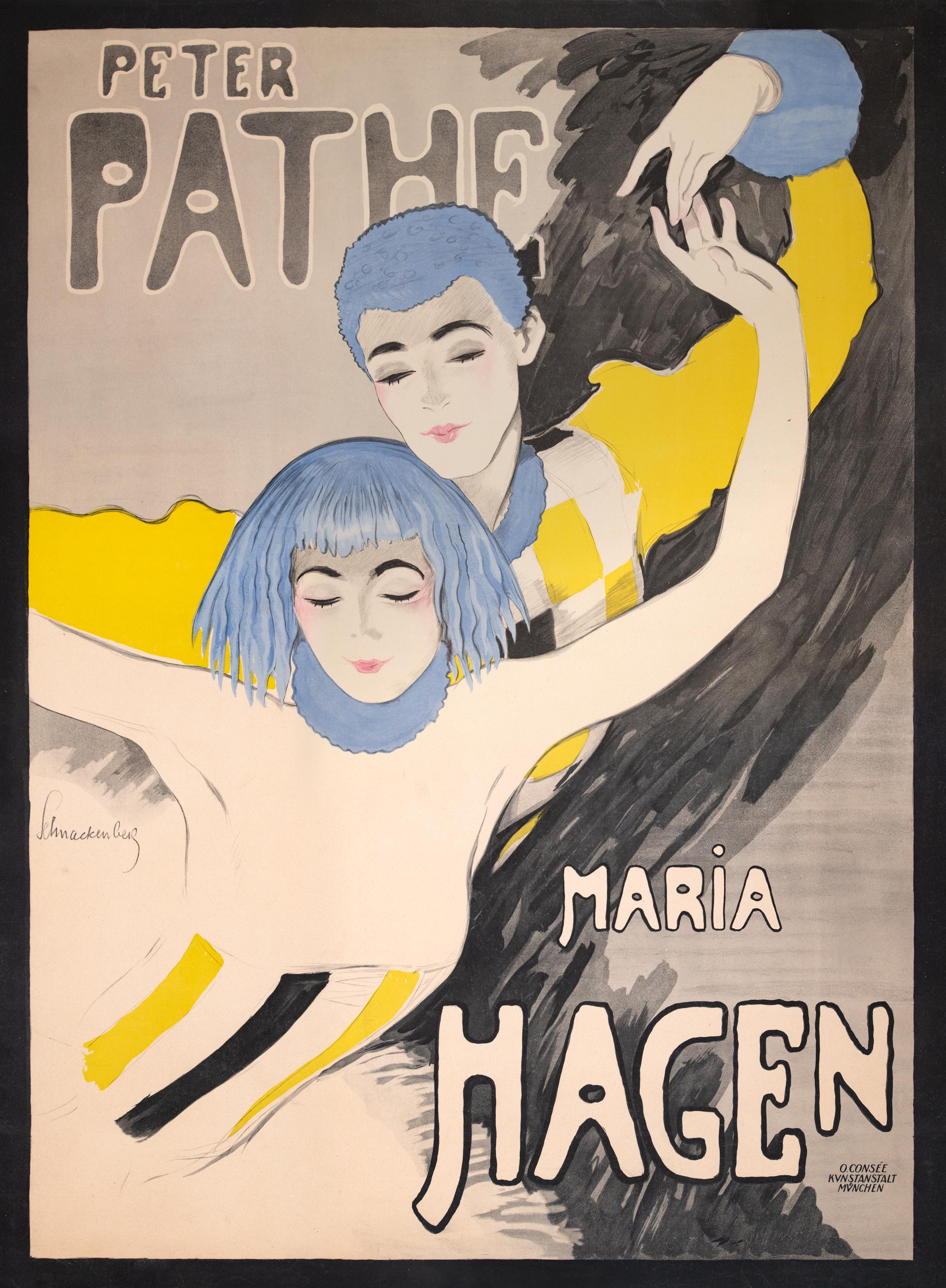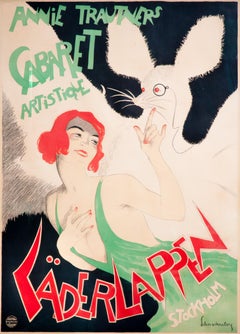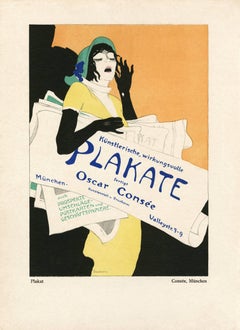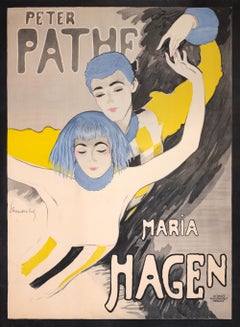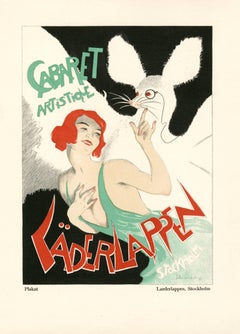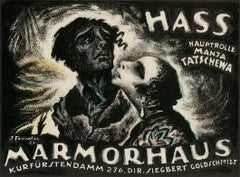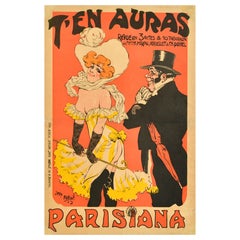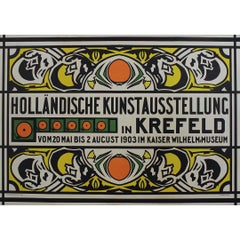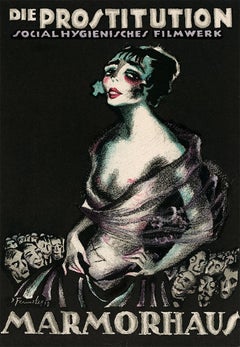Items Similar to Art Nouveau Poster "Marmorhouse (Der Teufel und Die Circe) by Josef Fenneker
Want more images or videos?
Request additional images or videos from the seller
1 of 13
Josef FennekerArt Nouveau Poster "Marmorhouse (Der Teufel und Die Circe) by Josef Fenneker1921
1921
$28,000
£20,911.60
€24,264.80
CA$38,780.20
A$43,472.29
CHF 22,669.81
MX$532,864.17
NOK 287,264.62
SEK 273,111.51
DKK 181,046.87
Shipping
Retrieving quote...The 1stDibs Promise:
Authenticity Guarantee,
Money-Back Guarantee,
24-Hour Cancellation
About the Item
The painter, graphic artist, production and set designer, Josef Fenneker, is one of the most important representatives of artistic film posters of the 1910s and 1920s. He was commissioned primarily by Berlin’s Marmorhaus cinema, which was located on Kurfürstendamm and known for its first releases, as well as by Berlin film production companies. In a great many of his posters Fenneker incorporated influences from Expressionism, Cubism and Futurism, Art Deco, and Jugendstil (Art Nouveau).
“The Devil and Circe” was an independent film produced outside the embrace of the mighty UFA. The image of the chivalrous Lucifer draping this brazen temptress Circe proves very alluring.
- Creator:Josef Fenneker (1895 - 1956, German)
- Creation Year:1921
- Dimensions:Height: 28.13 in (71.46 cm)Width: 37 in (93.98 cm)
- Medium:
- Movement & Style:
- Period:
- Condition:
- Gallery Location:Chicago, IL
- Reference Number:1stDibs: LU467313301542
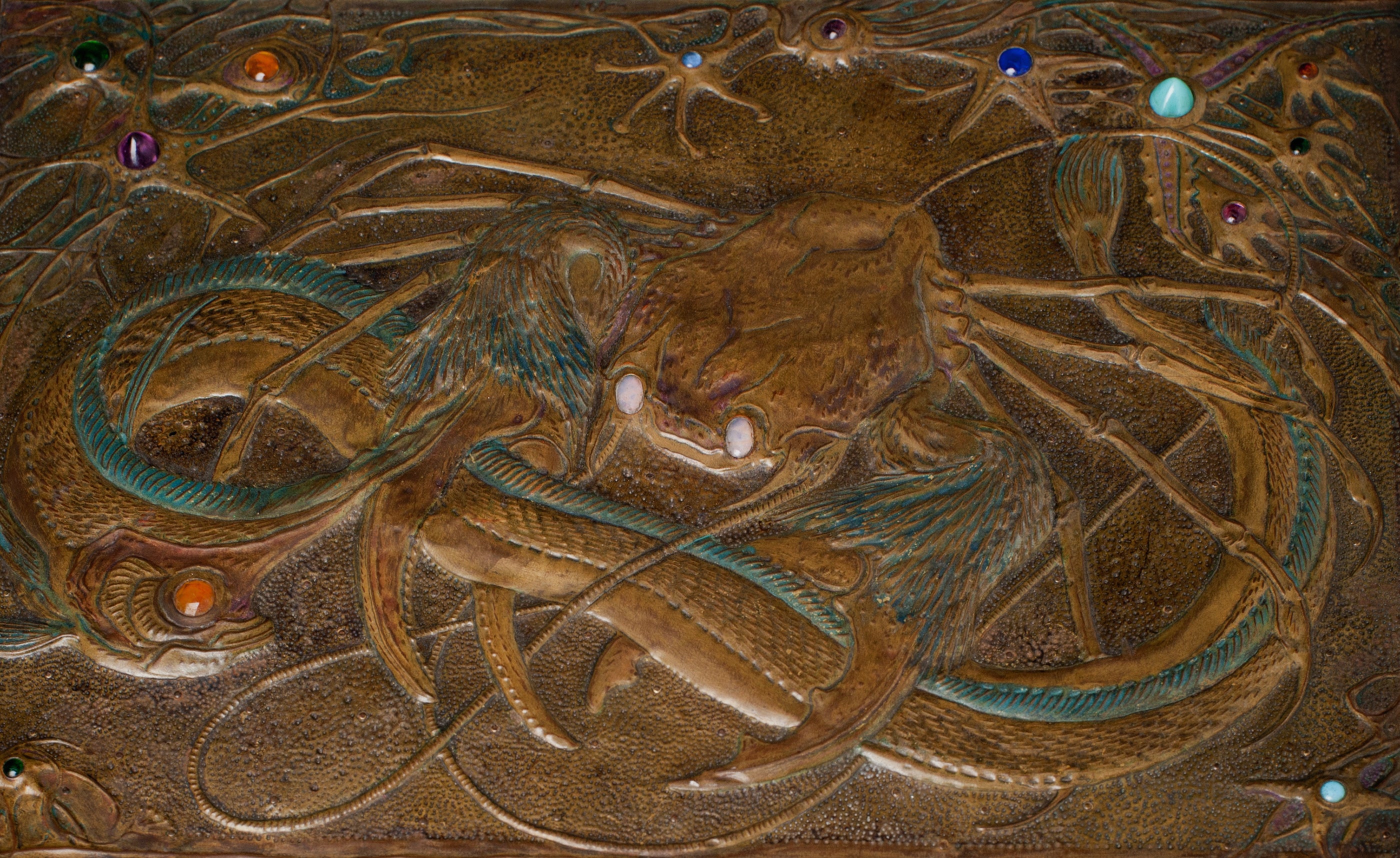
About the Seller
5.0
Platinum Seller
Premium sellers with a 4.7+ rating and 24-hour response times
Established in 2013
1stDibs seller since 2016
95 sales on 1stDibs
Typical response time: 1 hour
- ShippingRetrieving quote...Shipping from: Chicago, IL
- Return Policy
Authenticity Guarantee
In the unlikely event there’s an issue with an item’s authenticity, contact us within 1 year for a full refund. DetailsMoney-Back Guarantee
If your item is not as described, is damaged in transit, or does not arrive, contact us within 7 days for a full refund. Details24-Hour Cancellation
You have a 24-hour grace period in which to reconsider your purchase, with no questions asked.Vetted Professional Sellers
Our world-class sellers must adhere to strict standards for service and quality, maintaining the integrity of our listings.Price-Match Guarantee
If you find that a seller listed the same item for a lower price elsewhere, we’ll match it.Trusted Global Delivery
Our best-in-class carrier network provides specialized shipping options worldwide, including custom delivery.More From This Seller
View All"Laderlappen" Original Lithograph Poster by Walter Schnackenberg
By Walter Schnackenberg
Located in Chicago, IL
Printed by Oscar Consee, Munich, 1922
Not much is known about this Stockholm-based cabaret act. Translating literally as Bat Man, we see a young dancer tease an oversized bat wearing a monocle -- a truly bizarre but beautiful design. (text by Jack Rennert)
Walter Schnackenberg’s style changed several times during his long and successful career. Having studied in Munich, the artist traveled often to Paris where he fell under the spell of the Henri de Toulouse-Lautrec’s colorful and sensuous posters depicting theatrical and decadent subjects. Schnackenberg became a regular contributor of similar compositions to the German magazines Jugend and Simplicissimus before devoting himself to the design of stage scenery...
Category
1920s Art Nouveau Figurative Prints
Materials
Lithograph
Kostume, Plakate, und Dekorationen, "Consee"
By Walter Schnackenberg
Located in Chicago, IL
Walter Schnackenberg’s style changed several times during his long and successful career. Having studied in Munich, the artist traveled often to Paris where he fell under the spell of the Henri de Toulouse-Lautrec’s colorful and sensuous posters depicting theatrical and decadent subjects. Schnackenberg became a regular contributor of similar compositions to the German magazines Jugend and Simplicissimus before devoting himself to the design of stage scenery and costumes. In the artist’s theatrical work, his mastery of form, ornamentation, and Orientalism became increasingly evident. He excelled at combining fluid Art Nouveau outlines, with spiky Expressionist passages, and the postures and patterns of the mysterious East...
Category
1910s Expressionist Figurative Prints
Materials
Lithograph
"Peter Pathe Marie Hagan" Original Lithograph Poster by Walter Schnackenberg
By Walter Schnackenberg
Located in Chicago, IL
Original vintage lithograph poster with depiction of Munich-based balletic duo Peter Pathe and Maria Hagen. Design by Walter Schnackenberg (German, 1880-1961). A very scarce example....
Category
1910s Art Nouveau Figurative Prints
Materials
Lithograph
Kostume, Plakate, und Dekorationen, "Läderlappen"
By Walter Schnackenberg
Located in Chicago, IL
Walter Schnackenberg’s style changed several times during his long and successful career. Having studied in Munich, the artist traveled often to Paris where he fell under the spell of the Henri de Toulouse-Lautrec’s colorful and sensuous posters depicting theatrical and decadent subjects. Schnackenberg became a regular contributor of similar compositions to the German magazines Jugend and Simplicissimus before devoting himself to the design of stage scenery and costumes. In the artist’s theatrical work, his mastery of form, ornamentation, and Orientalism became increasingly evident. He excelled at combining fluid Art Nouveau outlines, with spiky Expressionist passages, and the postures and patterns of the mysterious East.
In his later years, Schnackenberg explored the unconscious, using surreal subject matter and paler colors that plainly portrayed dreams and visions, some imbued with political connotations. His drawings, illustrations, folio prints, and posters are highly sought today for their exceedingly imaginative qualities, enchanting subject matter, and arresting use of color.
SCHNACKENBERG: KOSTUME, PLAKATE UND DEKORATIONEN, a cardboard bound art book consisting of 43 prints of work by Walter Schnackenberg, 30 of which are color lithographs that are signed and some are titled and dated in the plate, as well as black and white prints and photographs with accompanying text by Oskar Bie; lithographs printed at Kunstanstalt Oskar Consee in Munich, other images printed by Gesellschaft Pick & Co. in Munich, the text and cover with color images by Schnackenberg front and verso printed by R. Oldenbourg in Munich; published by Musarion Verlag, Munich, 1920.
The majority of Walter Schnackenberg’s artistic output was destroyed by bomb attacks in Munich in 1944. The highly publicized 2013 auction in New York of the recovered pre-war poster collection once belonging to German poster aficionado, Hans Sachs has reintroduced the world to Walter Schnackenberg’s graphic genius and priceless ephemeral art from a lost era. Besides the museum world, designer Karl Lagerfeld is one of the most prodigious collectors of Schnackenberg. Flipping through the pages of Kostume, Plakate und Dekorationen, it becomes quite clear that Schnackenberg’s collection is ground zero at the crossroads of early modern fashion where the cult of celebrity meets up with dance, music, theater and cabaret, film and the graphic medium. Berlin and Munich under Germany’s Weimar Republic in the first quarter of the 20th century produced just the atmosphere to feed this burgeoning industry. Rising inflation sparked a recklessness to live large for the moment and heightened a desire for escapism. An influx of Indian and East Asian dancers and musicians added to the artsy bohemian cultural mix. A new decadence and tolerance resulted. Film boldly featured provocative subject matter. Cabarets became popular venues giving rise to the demi-monde in which people from all social stations mixed more freely in a thriving underground economy and culture where there was a blurring of boundaries and of social codes. Noted art historian and cultural doyen, Oskar Bie astutely observes in his introduction to Schnackenberg’s publication that what unites the images is fantasy and advertisement. Schnackenberg uses the eye as an instrument to brilliantly construct and convey this double message. His personages never directly confront the viewer. Their eyes gaze off in the distance like those of the screenplayer and film star Hedamaria Scholz in Schnackenberg’s “Die Rodelhexe” movie poster. Their eyes follow the path of a dance composition or become a transfixed and ogling male gaze such as the iconic 1911 Odeon Casino poster...
Category
1910s Expressionist Figurative Prints
Materials
Lithograph
Kostume, Plakate, und Dekorationen, "Anne Lemans"
By Walter Schnackenberg
Located in Chicago, IL
Walter Schnackenberg’s style changed several times during his long and successful career. Having studied in Munich, the artist traveled often to Paris where he fell under the spell of the Henri de Toulouse-Lautrec’s colorful and sensuous posters depicting theatrical and decadent subjects. Schnackenberg became a regular contributor of similar compositions to the German magazines Jugend and Simplicissimus before devoting himself to the design of stage scenery and costumes. In the artist’s theatrical work, his mastery of form, ornamentation, and Orientalism became increasingly evident. He excelled at combining fluid Art Nouveau outlines, with spiky Expressionist passages, and the postures and patterns of the mysterious East.
In his later years, Schnackenberg explored the unconscious, using surreal subject matter and paler colors that plainly portrayed dreams and visions, some imbued with political connotations. His drawings, illustrations, folio prints, and posters are highly sought today for their exceedingly imaginative qualities, enchanting subject matter, and arresting use of color.
SCHNACKENBERG: KOSTUME, PLAKATE UND DEKORATIONEN, a cardboard bound art book consisting of 43 prints of work by Walter Schnackenberg, 30 of which are color lithographs that are signed and some are titled and dated in the plate, as well as black and white prints and photographs with accompanying text by Oskar Bie; lithographs printed at Kunstanstalt Oskar Consee in Munich, other images printed by Gesellschaft Pick & Co. in Munich, the text and cover with color images by Schnackenberg front and verso printed by R. Oldenbourg in Munich; published by Musarion Verlag, Munich, 1920.
The majority of Walter Schnackenberg’s artistic output was destroyed by bomb attacks in Munich in 1944. The highly publicized 2013 auction in New York of the recovered pre-war poster collection once belonging to German poster aficionado, Hans Sachs has reintroduced the world to Walter Schnackenberg’s graphic genius and priceless ephemeral art from a lost era. Besides the museum world, designer Karl Lagerfeld is one of the most prodigious collectors of Schnackenberg. Flipping through the pages of Kostume, Plakate und Dekorationen, it becomes quite clear that Schnackenberg’s collection is ground zero at the crossroads of early modern fashion where the cult of celebrity meets up with dance, music, theater and cabaret, film and the graphic medium. Berlin and Munich under Germany’s Weimar Republic in the first quarter of the 20th century produced just the atmosphere to feed this burgeoning industry. Rising inflation sparked a recklessness to live large for the moment and heightened a desire for escapism. An influx of Indian and East Asian dancers and musicians added to the artsy bohemian cultural mix. A new decadence and tolerance resulted. Film boldly featured provocative subject matter. Cabarets became popular venues giving rise to the demi-monde in which people from all social stations mixed more freely in a thriving underground economy and culture where there was a blurring of boundaries and of social codes. Noted art historian and cultural doyen, Oskar Bie astutely observes in his introduction to Schnackenberg’s publication that what unites the images is fantasy and advertisement. Schnackenberg uses the eye as an instrument to brilliantly construct and convey this double message. His personages never directly confront the viewer. Their eyes gaze off in the distance like those of the screenplayer and film star Hedamaria Scholz in Schnackenberg’s “Die Rodelhexe” movie poster. Their eyes follow the path of a dance composition or become a transfixed and ogling male gaze such as the iconic 1911 Odeon Casino...
Category
1910s Expressionist Figurative Prints
Materials
Lithograph
Kostume, Plakate, und Dekorationen, "Cabaret Bonbonniere"
By Walter Schnackenberg
Located in Chicago, IL
Walter Schnackenberg’s style changed several times during his long and successful career. Having studied in Munich, the artist traveled often to Paris where he fell under the spell o...
Category
1910s Expressionist Figurative Prints
Materials
Lithograph
You May Also Like
Hass by Josef Fenneker, Weimar German Expressionist silent film poster, 1920
By Josef Fenneker
Located in Chicago, IL
Original lithograph of Josef Fenneker’s German Expressionist poster design for the 1920 silent film Hass (Hate) directed by Manfred Noa.
J...
Category
1920s Expressionist Prints and Multiples
Materials
Lithograph
Original Antique Cabaret Theatre Poster T'en Auras Parisiana Revue Jack Abeille
Located in London, GB
Original antique cabaret theatre poster advertising a performance - T'en Auras Parisiana Revue en 3 actes & 10 tableaux de MMrs H. Moreau Verdellet & Ch, Quinel - You'll Get It a rev...
Category
Antique Early 1900s French Art Nouveau Posters
Materials
Paper
J. Thorn Prikker Original 1903 poster - Holländische Kunstausstellung in Krefeld
Located in PARIS, FR
In the world of art and design, the work of J. Thorn Prikker (1868-1932) stands as a testament to the enduring beauty of aesthetic craftsmanship. In 1903, Prikker's original poster f...
Category
Early 1900s Art Nouveau Prints and Multiples
Materials
Lithograph, Paper
Die Prostitution by Josef Fenneker, Weimar silent film poster, Anita Berber 1919
By Josef Fenneker
Located in Chicago, IL
Original lithograph of Josef Fenneker’s German Expressionist poster design for the 1919 silent film Die Prostitution starring Anita Berber ...
Category
1910s Expressionist Prints and Multiples
Materials
Lithograph
Madonna (Dreaming Woman) - Original Vintage Exhibition Poster (Berggruen)
By Edvard Munch
Located in Paris, IDF
Edvard MUNCH (1863 - 1944)
Madonna, 1983
Original vintage poster (high quality four-color process)
On thick paper 79 x 50 cm
Created for the exhibition "Munch Engravings and Lithogr...
Category
1960s Expressionist Portrait Prints
Materials
Offset
Original Jules Cheret Antique Poster Musee Grevin Paris 1900
By Jules Chéret
Located in Boca Raton, FL
Musee Grevin Avant La Lettre (Before Text), created in 1900, is one of the best known images by the great French artist, Jules Chéret. The poster advertises a show performance at the...
Category
Early 1900s Prints and Multiples
Materials
Lithograph
More Ways To Browse
Art Deco Drapes
Antique Devil
Art Nouveau Drapes
Lucifer Art
Devil Poster
South Africa Travel Poster
Vintage Diver Art
Vintage Egypt Travel Posters
Vintage Framed Dried Flowers
Air Canada Poster
Aladin France
Beatles Psychedelic
Bloch Julius
Fashion Illustrations 1920s
Harer Picture Frame
Jacqueline Picasso Ceramic
Javier Calleja
Jim Dine Poster
